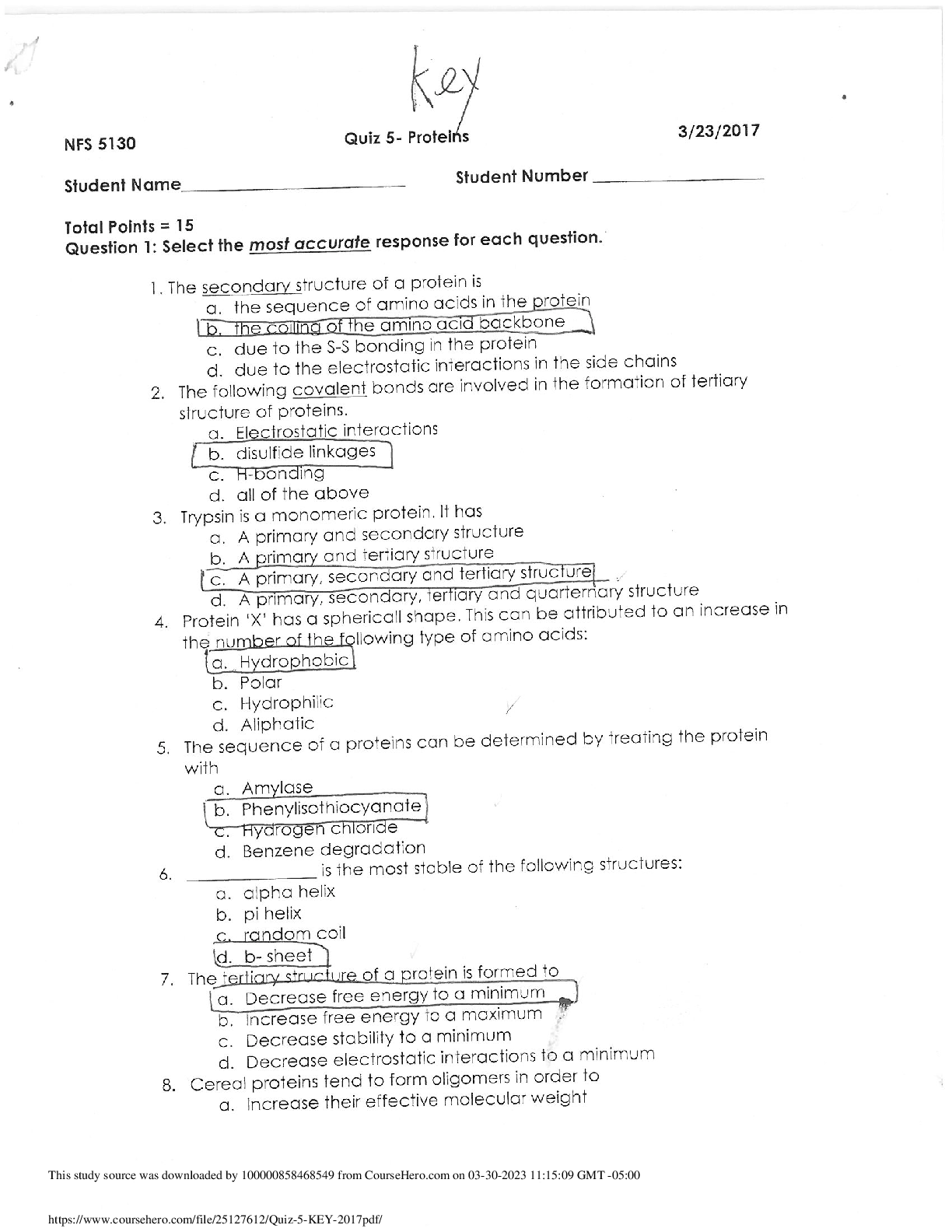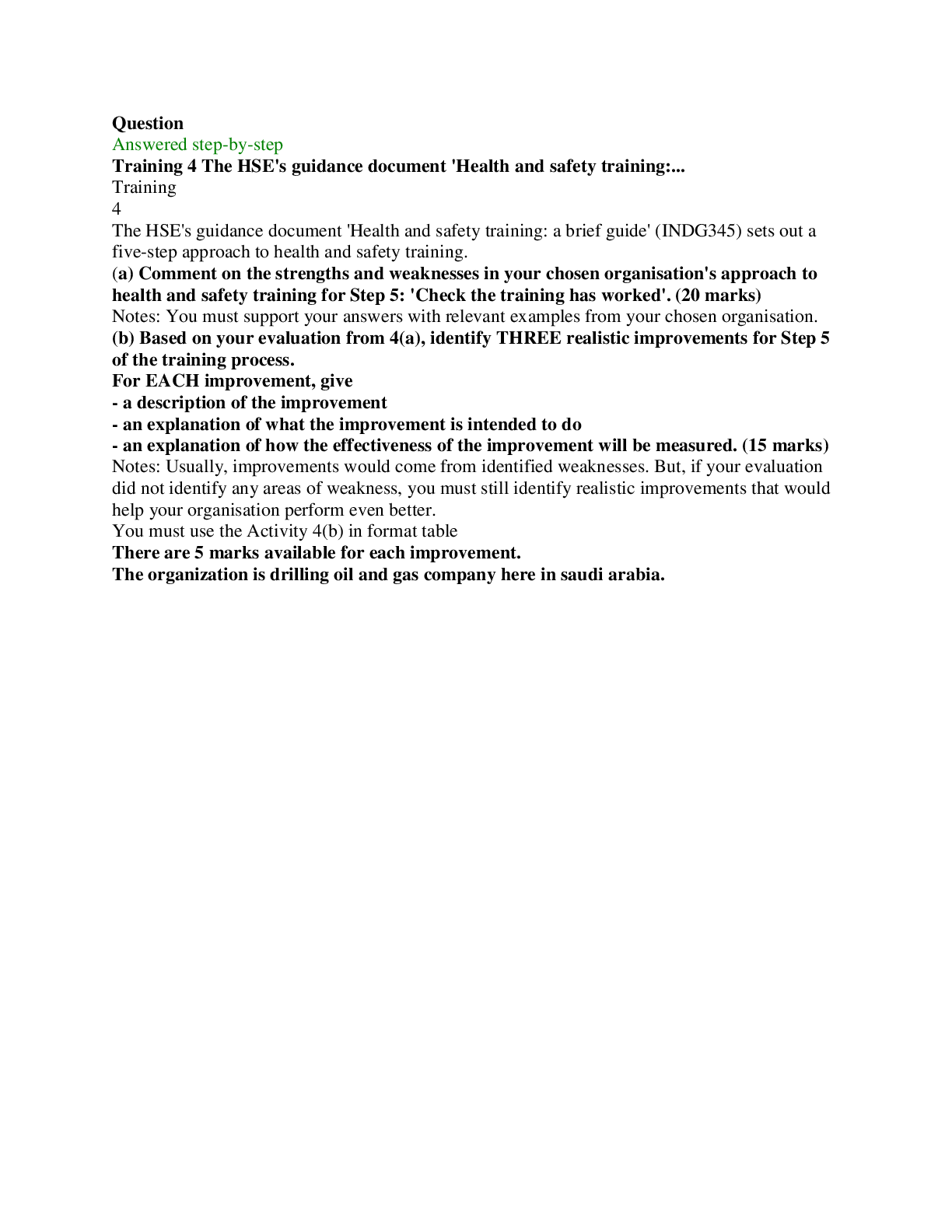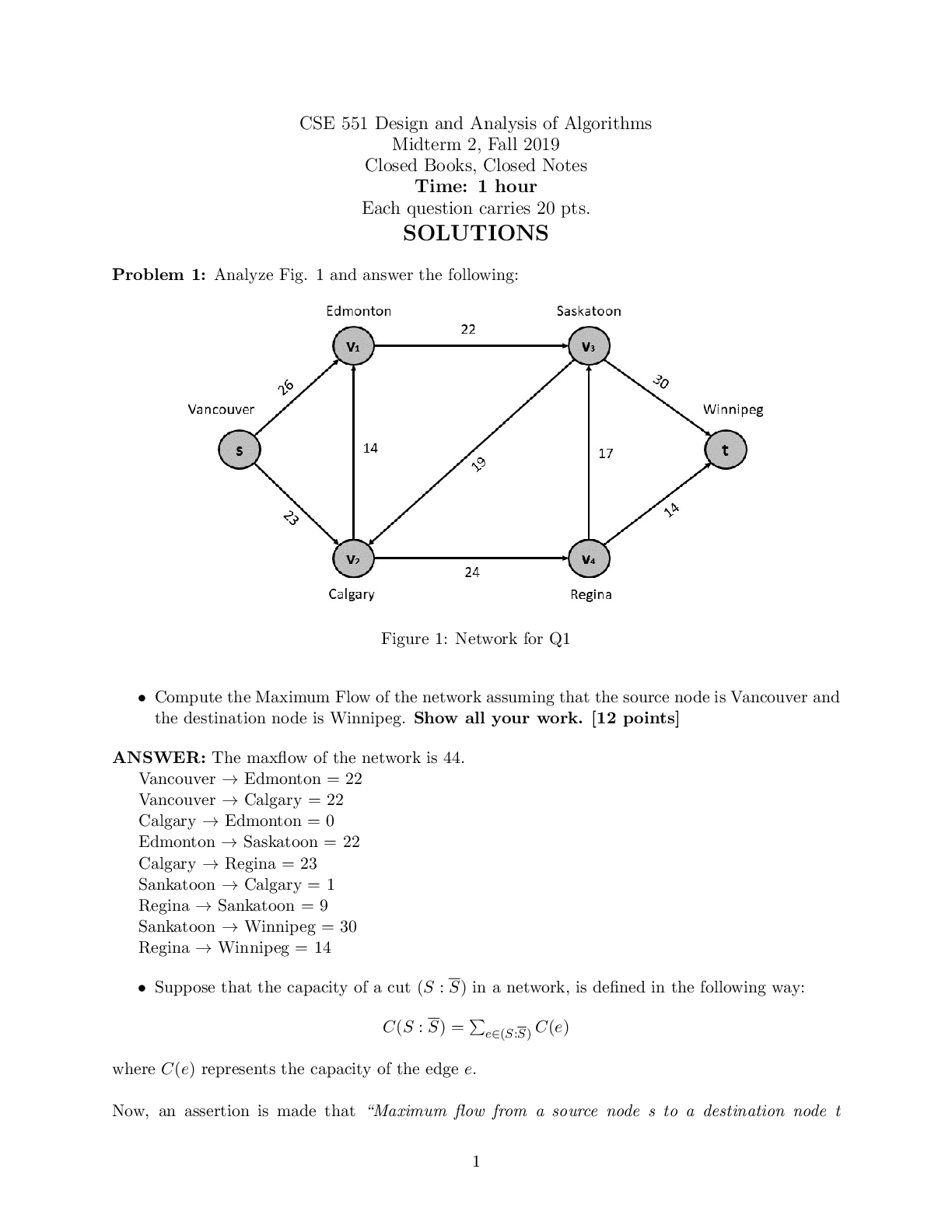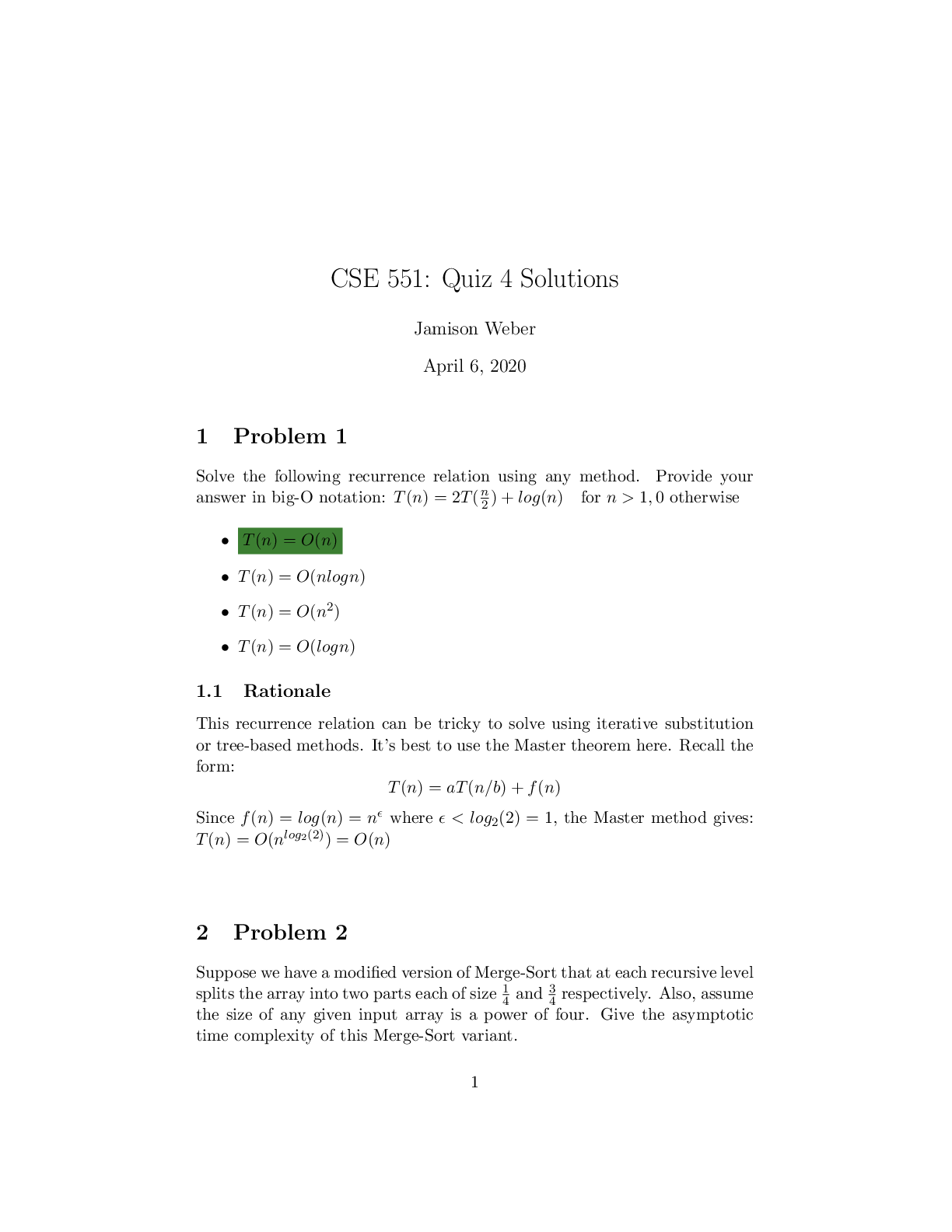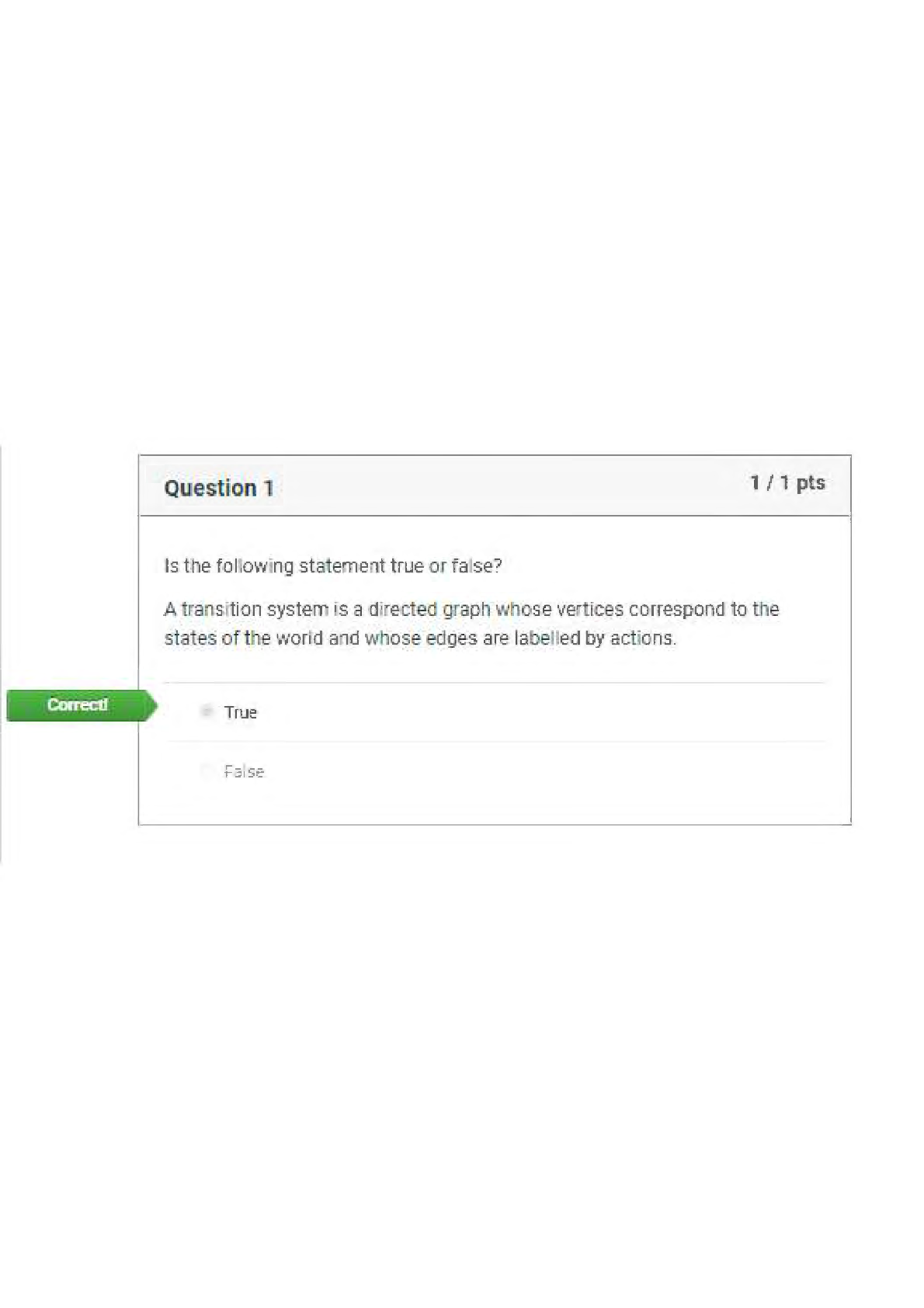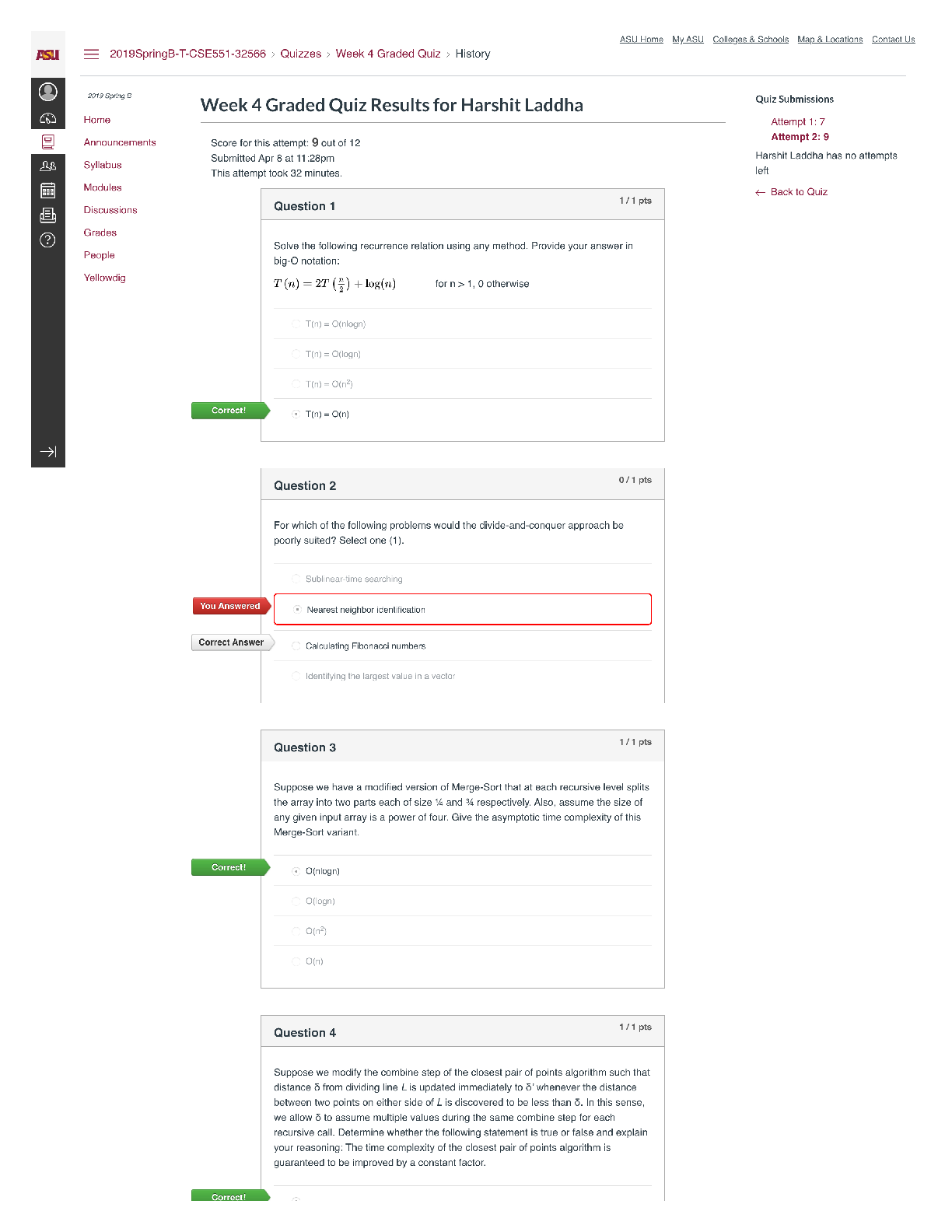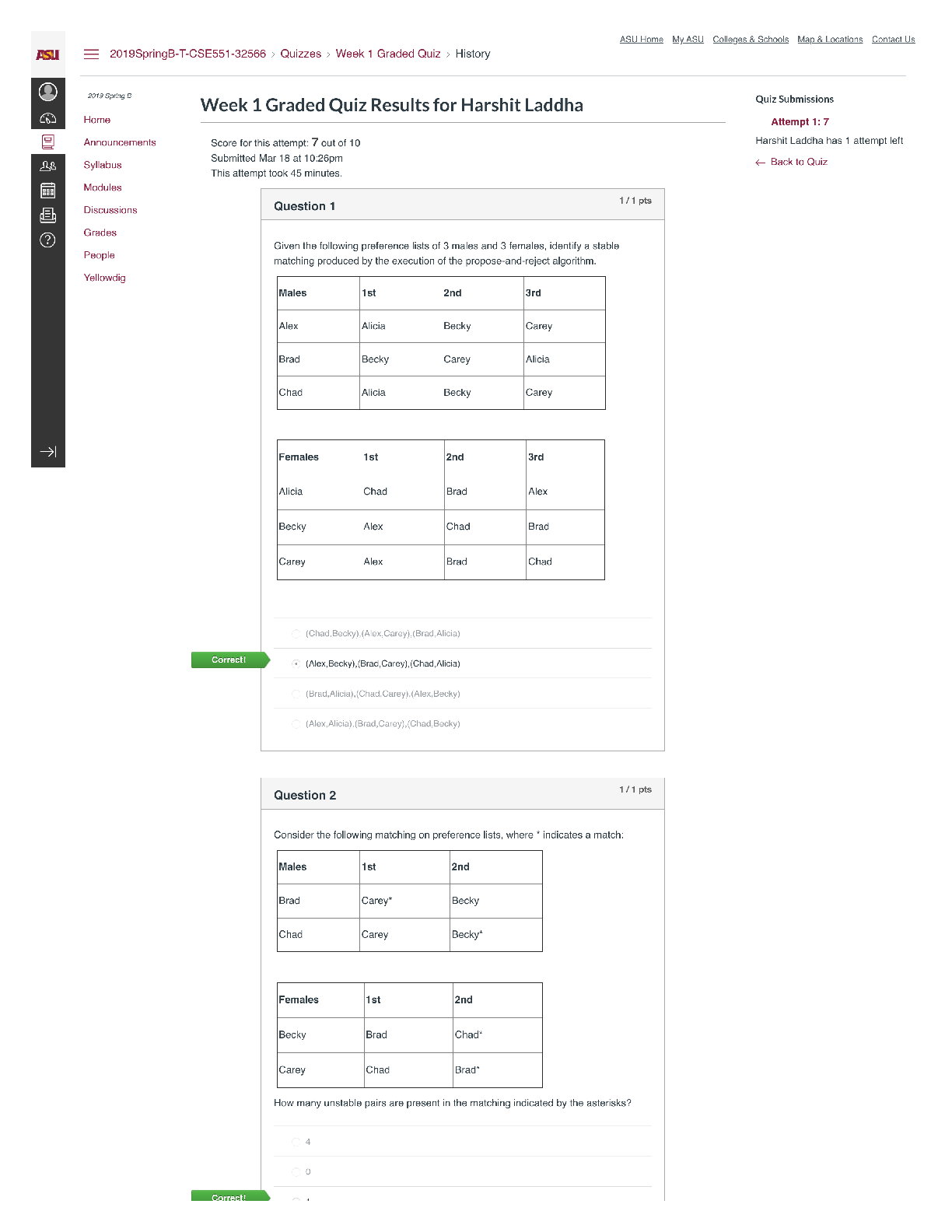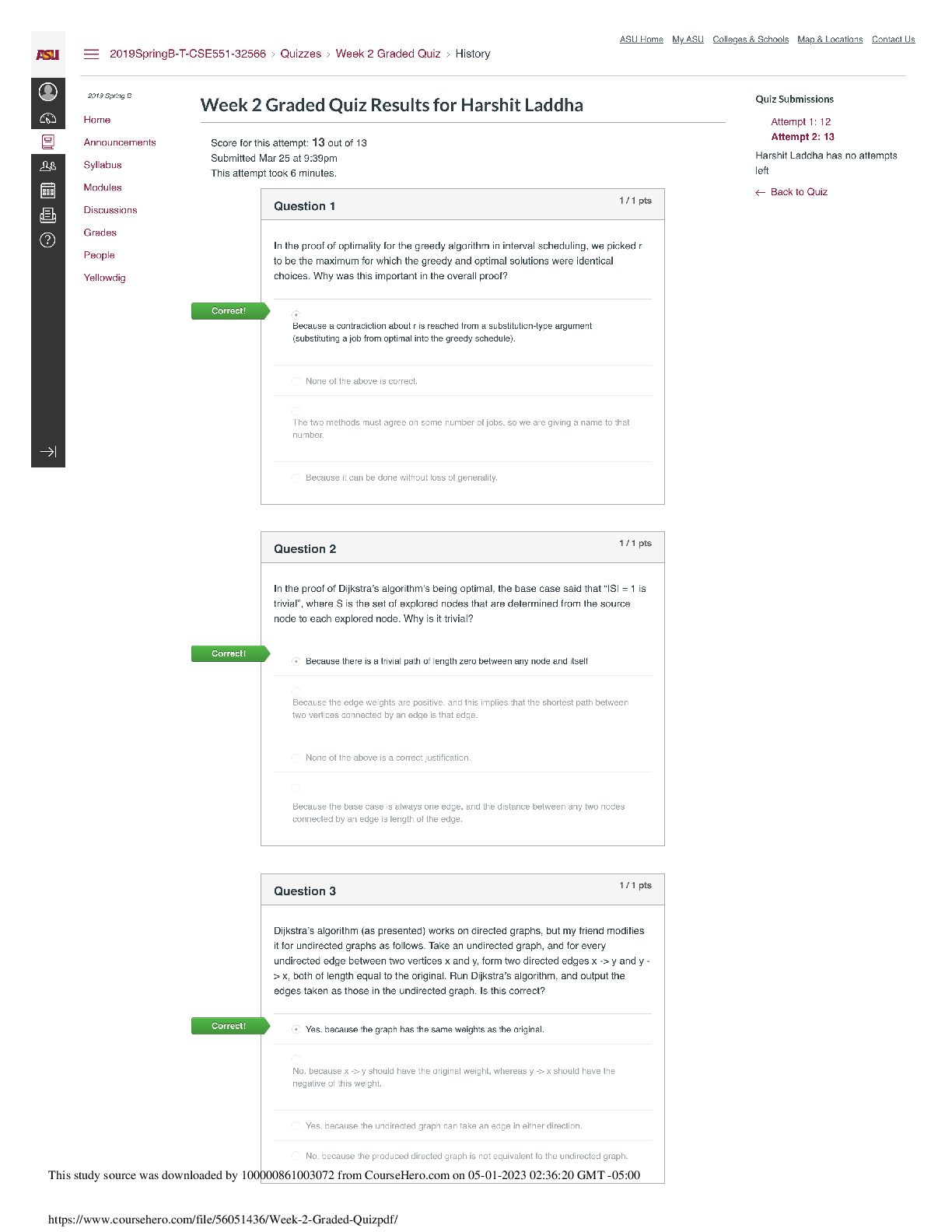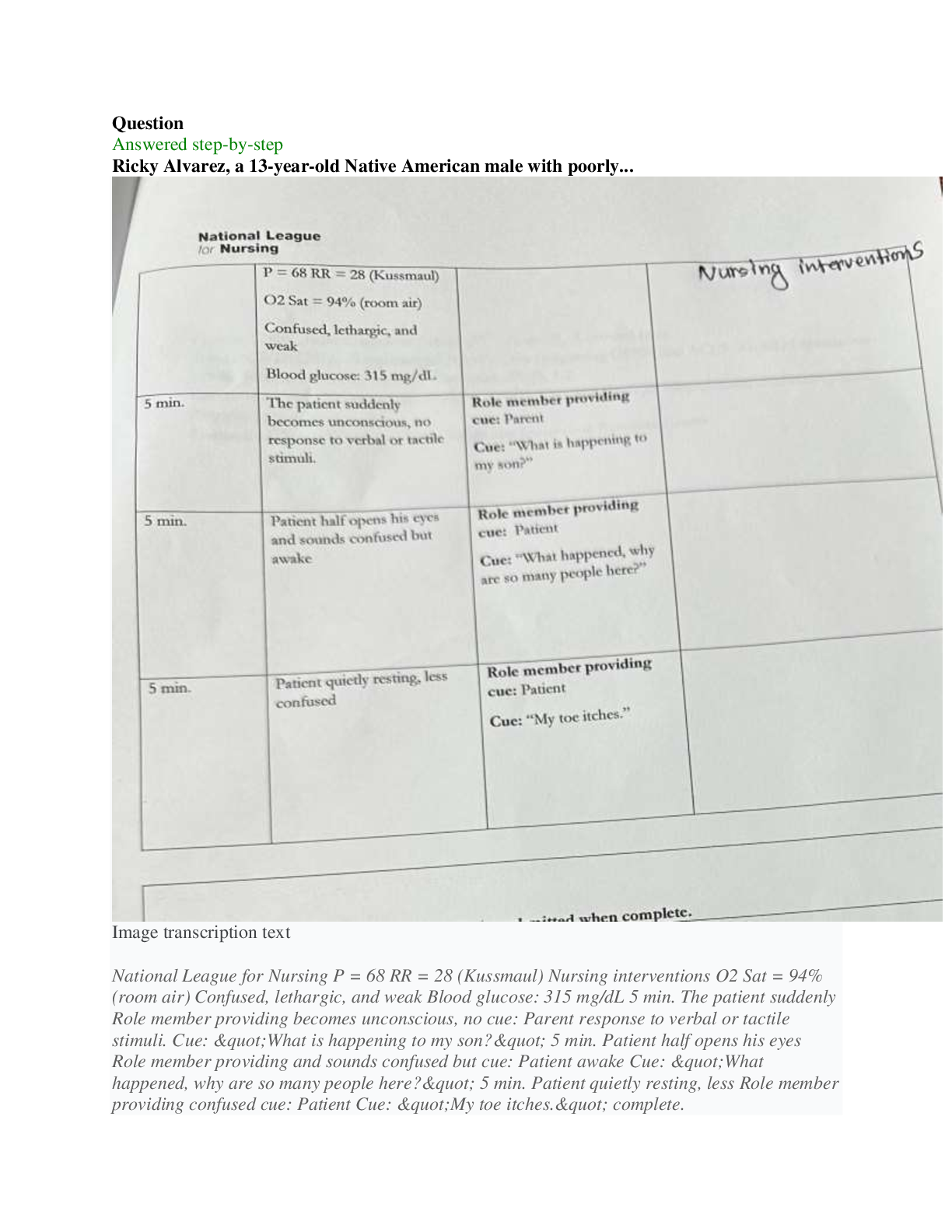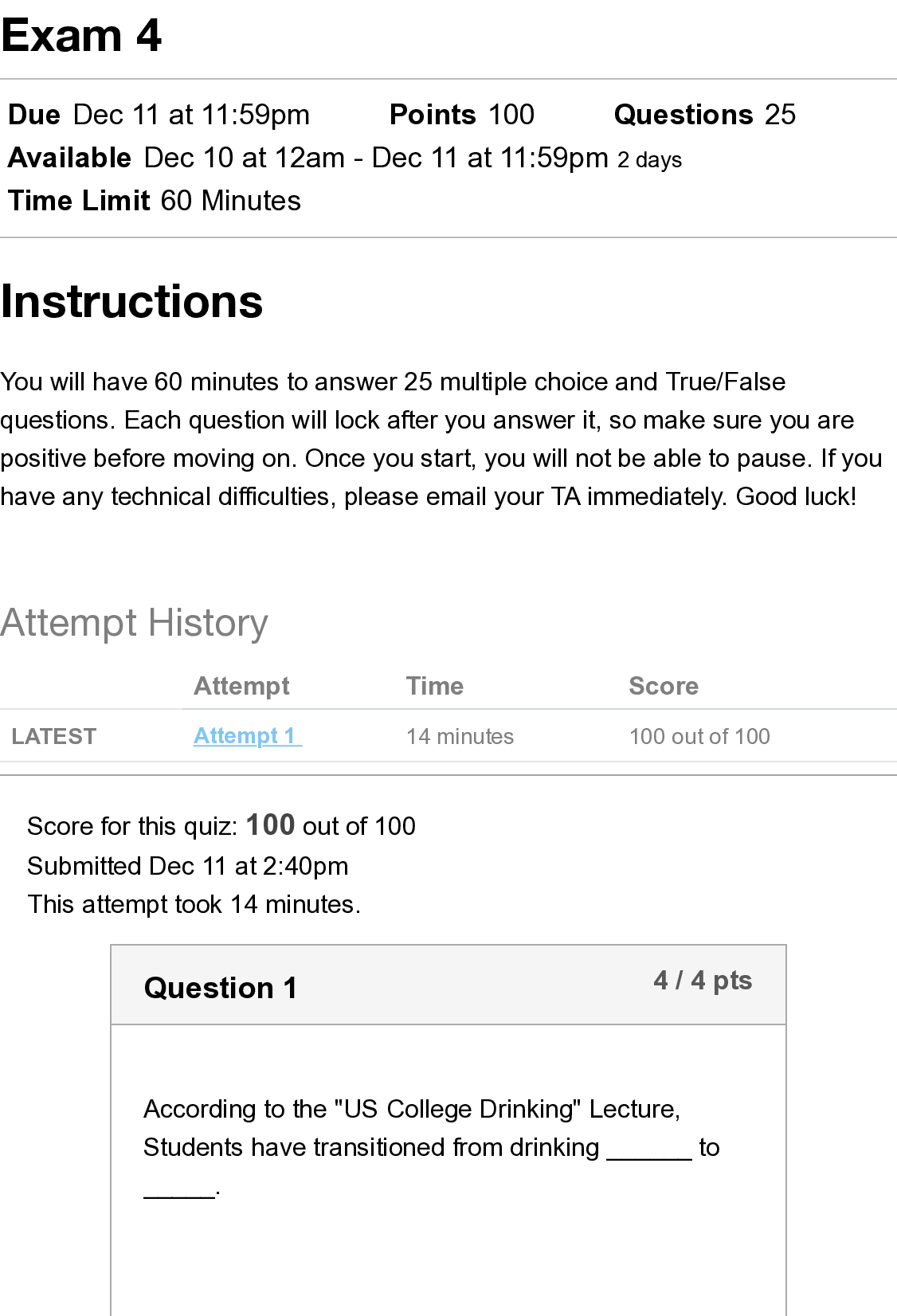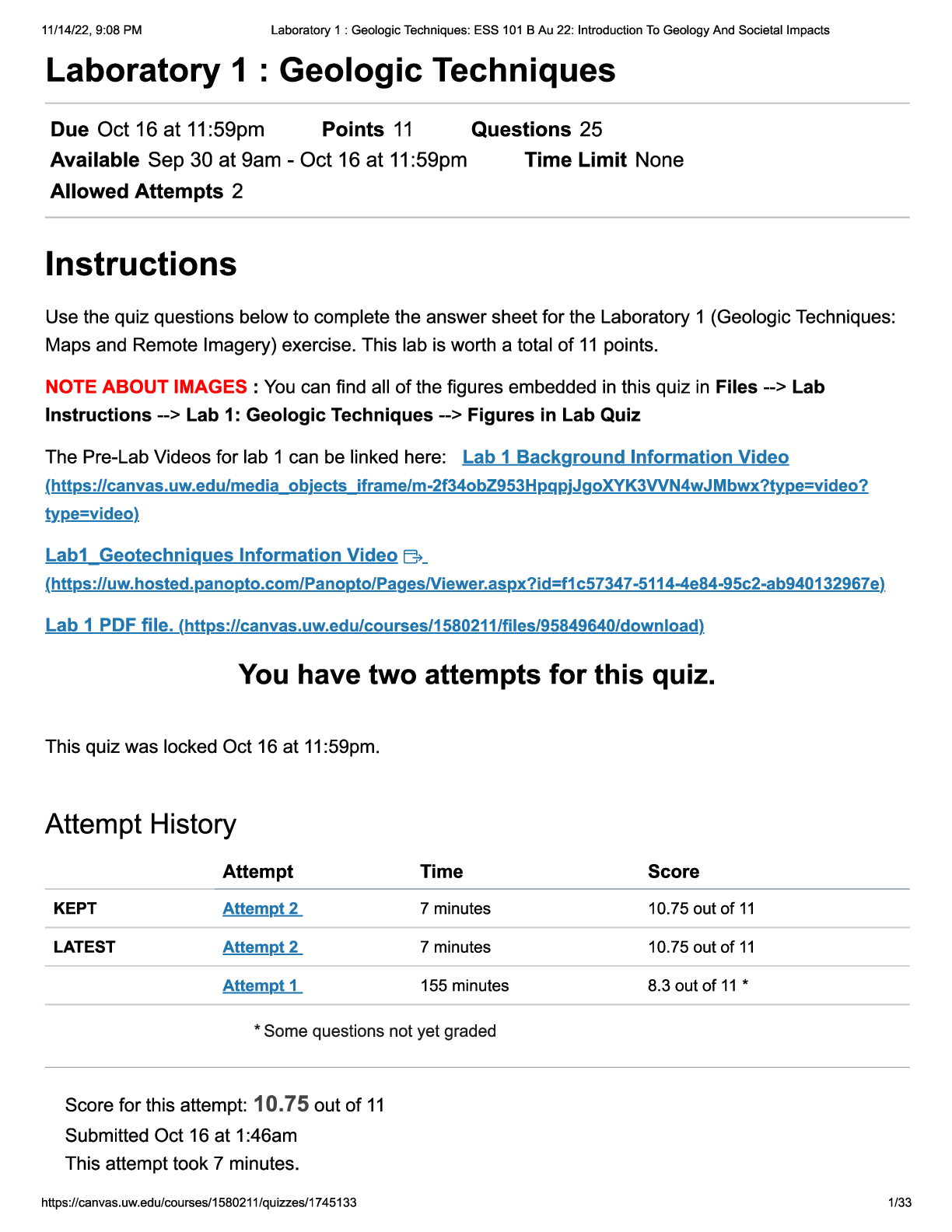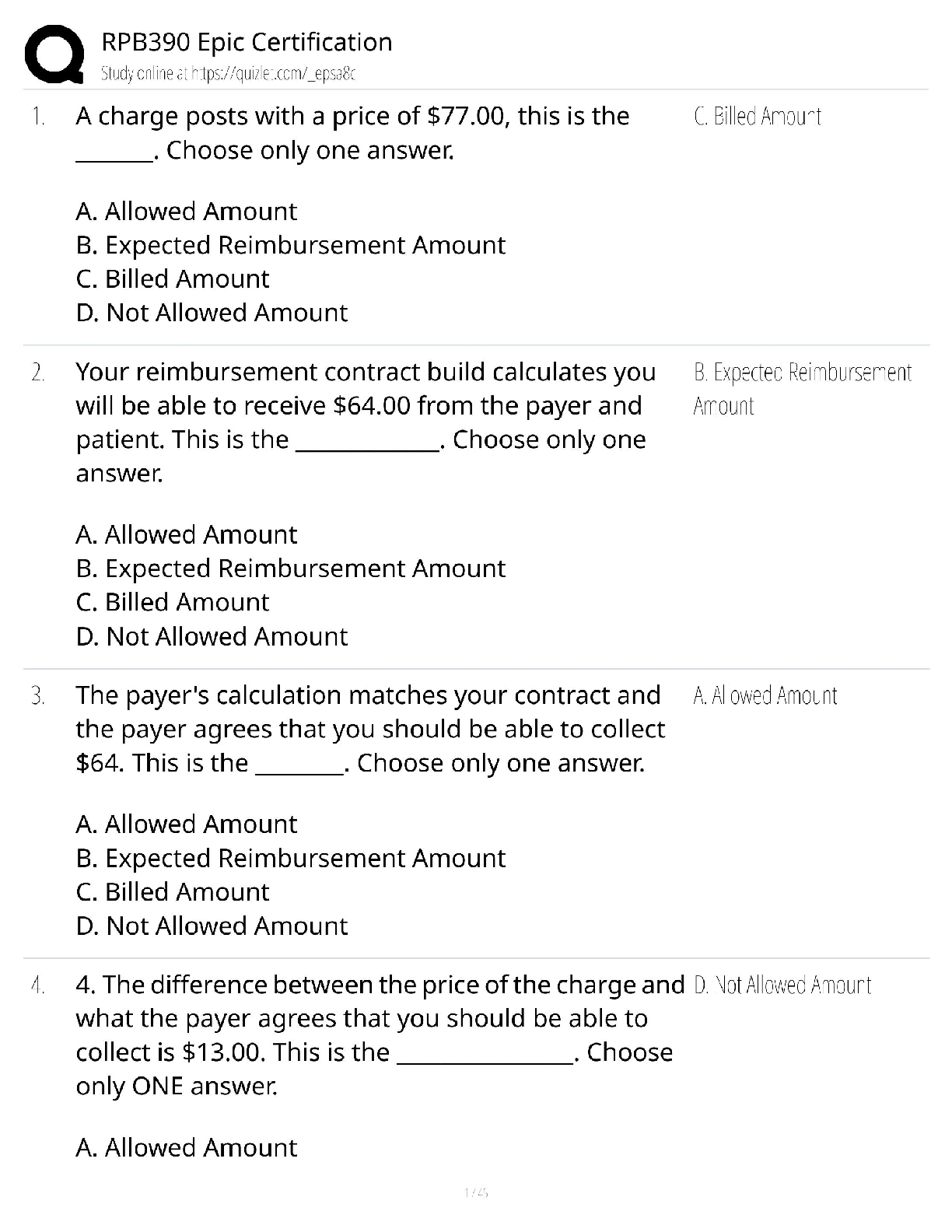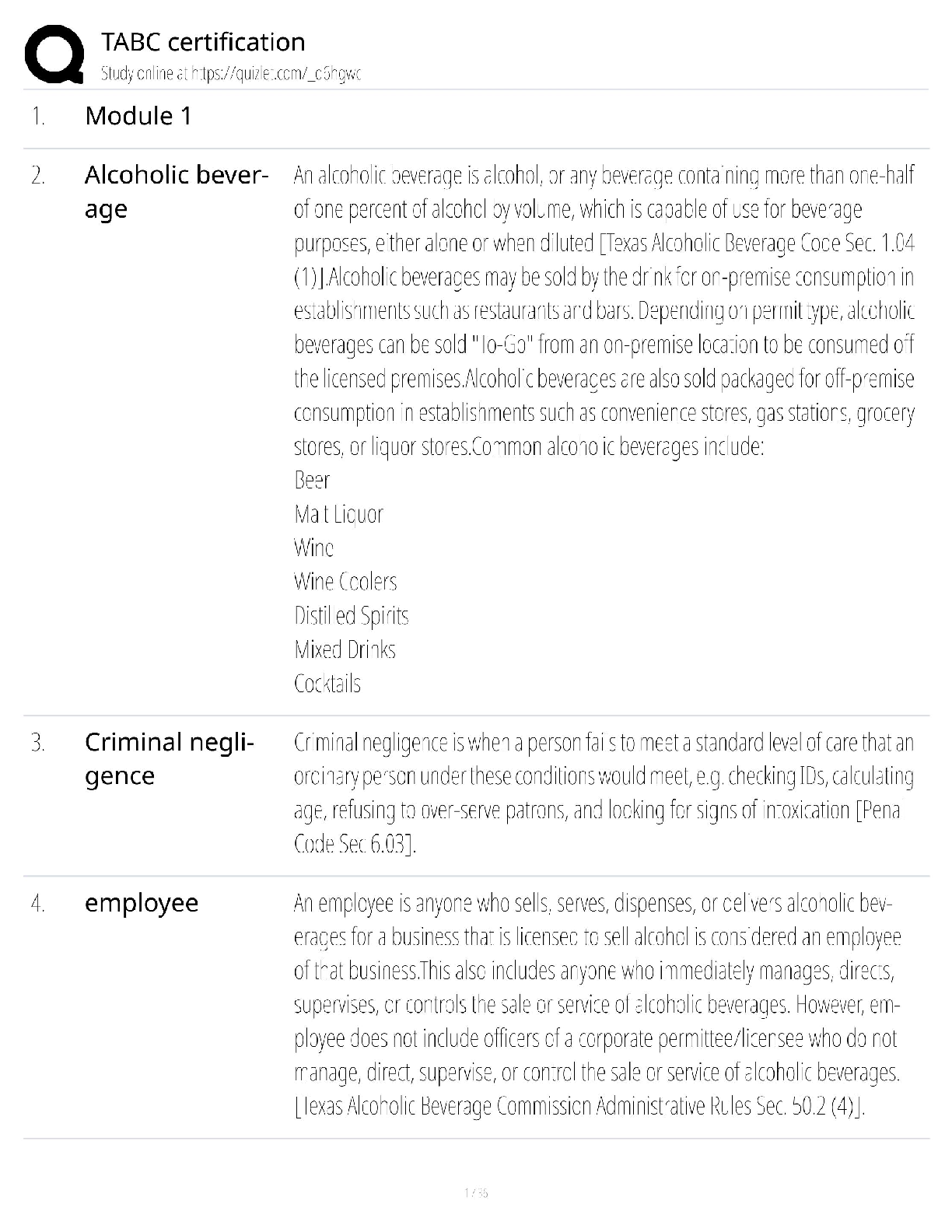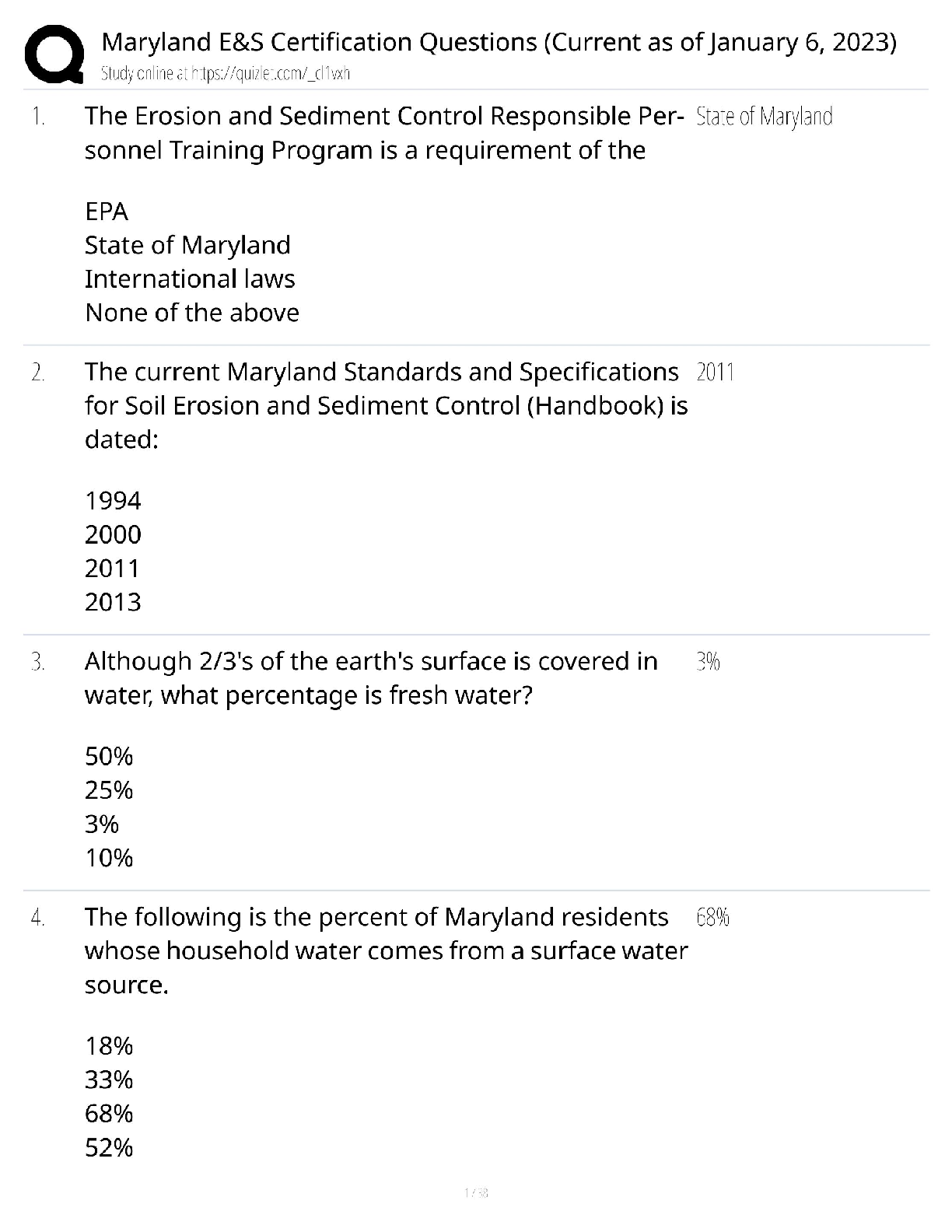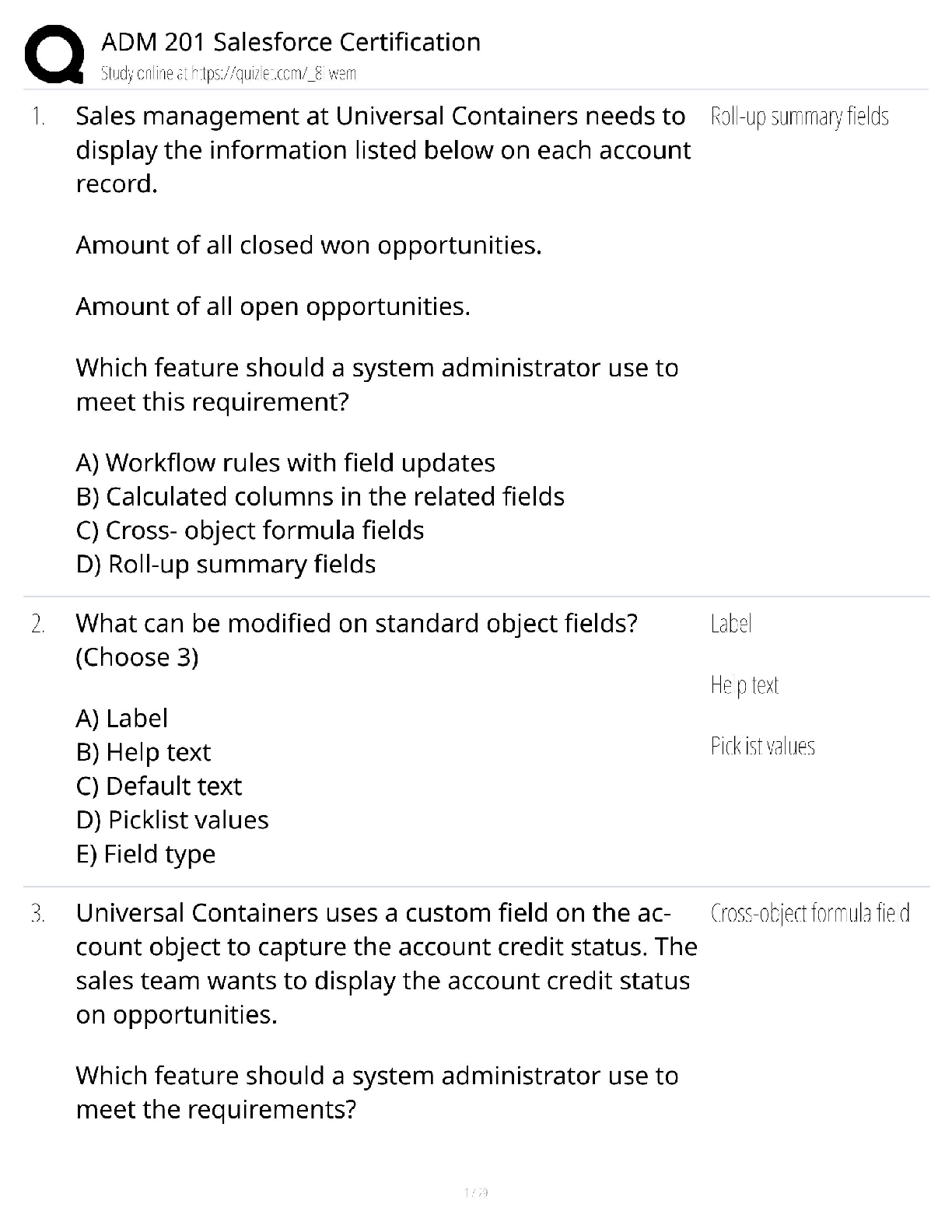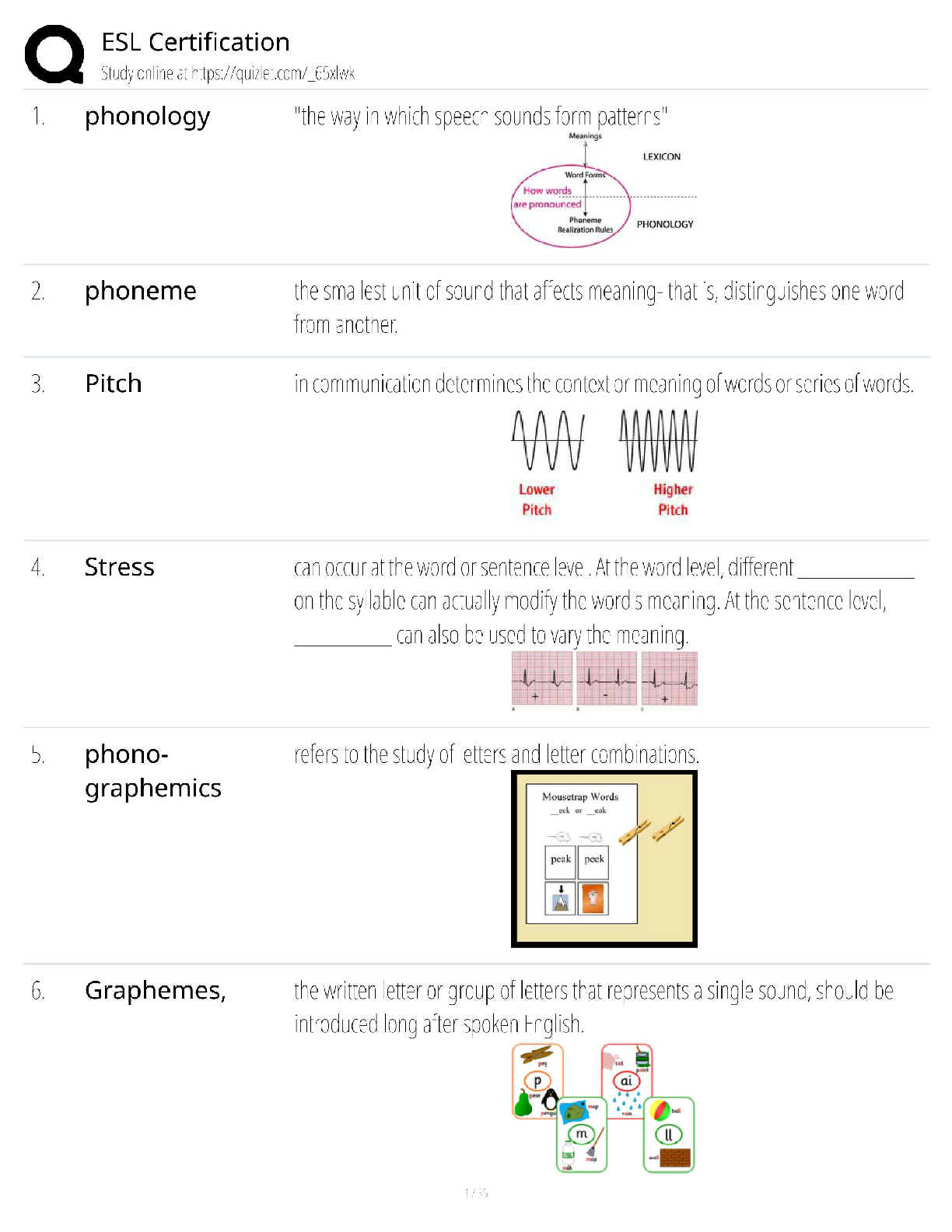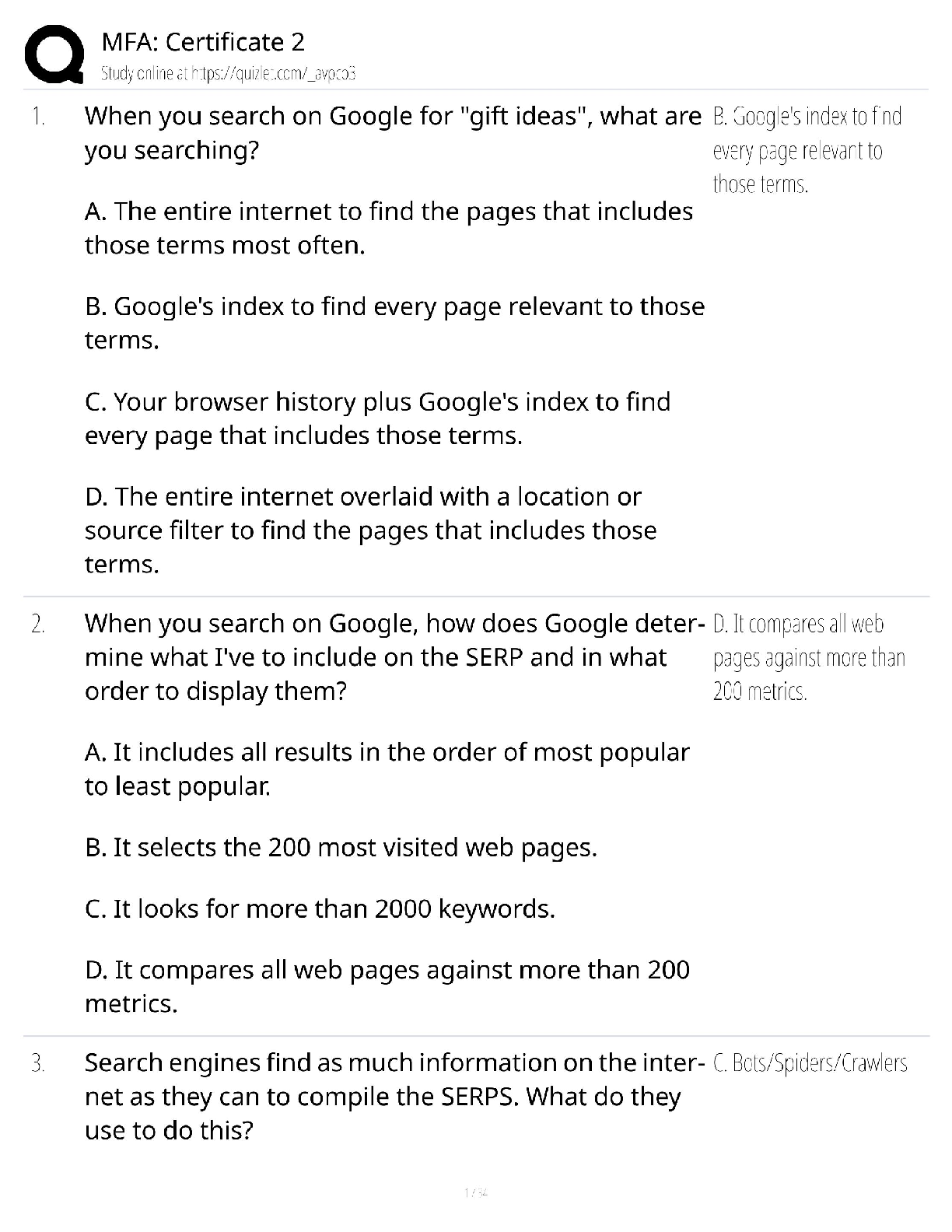Astronomy > QUESTIONS & ANSWERS > Art Project 2 Reading Quiz: ASTRO 7N, Section 01: Artistic Universe. APRIL 2023. ASTRO7N - Pennsylva (All)
Art Project 2 Reading Quiz: ASTRO 7N, Section 01: Artistic Universe. APRIL 2023. ASTRO7N - Pennsylvania State University. Score for this quiz: 100 out of 100. SEPT 2022
Document Content and Description Below
Art Project 2 Reading Quiz: ASTRO 7N, Section 01: Artistic Universe. APRIL 2023. ASTRO7N - Pennsylvania State University. Score for this quiz: 100 out of 100. SEPT 2022 Art Project 2 Reading Quiz: AST ... RO 7N, Section 01: Artistic Universe (22281--UP---WBASTRO---7N--------01--) https://psu.instructure.com/courses/2199902/quizzes/4579491?module_item_id=36293928 1/7 Art Project 2 Reading Quiz Due Sep 26, 2022 at 11:55pm Points 100 Questions 10 Available after Sep 12, 2022 at 8am Time Limit None Instructions Score for this quiz: 100 out of 100 (article 1 (https://psu.instructure.com/courses/2199902/pages/art-project-2-reading-1-astronomy-and-art) , article 2 (https://psu.instructure.com/courses/2199902/pages/art-project-2-reading-2-colors) ) and to any external websites given in the reading material. However, please do not consult with other students while taking the quiz. There is no time limit on this 10 multiple-choice question quiz. The quiz is due at 11:55pm on Monday, 26 September. This is the same time and day as Unit 2 Part 2 of the video game is due. Question 1 10 / 10 pts What object appears in these sketches — drawn as seen through one of the first telescopes, in the early 17th century — and who drew them? 4/12/23, 2:34 PM Art Project 2 Reading Quiz: ASTRO 7N, Section 01: Artistic Universe (22281--UP---WBASTRO---7N--------01--) https://psu.instructure.com/courses/2199902/quizzes/4579491?module_item_id=36293928 2/7 Mercury, by Tycho Brahe Mars, by Johannes Kepler Earth’s Moon, by Galileo Galilei Venus, by Nicholaus Copernicus Earth’s Moon, by Sir Isaac Newton Question 2 10 / 10 pts Why is Earth's sky blue, in daytime? Molecules in Earth's atmosphere scatter blue components of sunlight more than redder wavelengths, so we see blue in directions other than directly towards the Sun. The sky is clear, but the color is a reflection of the blue of Earth's oceans back down towards the surface. Your eye over-corrects from the Sun's bright yellow light, to form a negative image in blue in every other direction. The Sun emits only blue light; other colors are a result of energy lost through repeated scattering by atoms. Question 3 10 / 10 pts 4/12/23, 2:34 PM Art Project 2 Reading Quiz: ASTRO 7N, Section 01: Artistic Universe (22281--UP---WBASTRO---7N--------01--) https://psu.instructure.com/courses/2199902/quizzes/4579491?module_item_id=36293928 3/7 One of these cars is black and the other is red (really). They are illuminated by sodium lamps which have dominantly yellow light. Why do the cars both appear to be dark in color? Blue light is not present in the light source, and so it cannot be reflected by the red paint as it would need to be in order to produce a red color. The red car would absorb all the red light and look red, but there is not any red light in the illumination source. Yellow light combines with the red and blue light coming from the Sun, and produces a dark color. The black car is absorbing the light being emitted by the red car. Red light, which would be reflected from the red car, is not present in the light source. Question 4 10 / 10 pts Why did NASA recruit artist Rick Guidice in the 1970s? To create a series of portraits documenting the Apollo mission astronauts. To design rockets for the later Apollo missions. To teach a series of painting workshops for NASA mission scientists. 4/12/23, 2:34 PM Art Project 2 Reading Quiz: ASTRO 7N, Section 01: Artistic Universe (22281--UP---WBASTRO---7N--------01--) https://psu.instructure.com/courses/2199902/quizzes/4579491?module_item_id=36293928 4/7 To illustrate possible future human colonies in space. To create the official NASA logo. Question 5 10 / 10 pts What is the red-rimmed round black object in the sky of this painting by artist Lucien Rudaux (French, 1874 – 1947)? a black hole Earth Jupiter Venus Earth's Moon Question 6 10 / 10 pts The painting above was created in 1944 by artist Chesley Bonestell (U.S.A., 1888 – 1986), and is meant to portray Saturn's largest moon, Titan. What have learned about Titan since then, that renders this artist's depiction somewhat out-of-date? 4/12/23, 2:34 PM Art Project 2 Reading Quiz: ASTRO 7N, Section 01: Artistic Universe (22281--UP---WBASTRO---7N--------01--) https://psu.instructure.com/courses/2199902/quizzes/4579491?module_item_id=36293928 5/7 Titan sits inside the rings of Saturn, so the view of them would stretch all the way across its sky. Titan is surrounded by a thick, orange, smoggy atmosphere, making it hard to see Saturn or stars from its surface. Titan is a gas giant, and has no solid surface at all. Titan is a hot, volcanic moon — covered with lakes of continuously molten rock. Titan actually orbits the planet Jupiter, not Saturn. Question 7 10 / 10 pts painting by Pat Rawlings painting by Chesley Bonestell Speculative futuristic human explorers aside, which of the paintings above more accurately represents the colors and terrain of Mars as we understand them today? Bonestell's (on the right) Rawlings' (on the left) Neither of these is accurate; Mars' surface is flat and gray. 4/12/23, 2:34 PM Art Project 2 Reading Quiz: ASTRO 7N, Section 01: Artistic Universe (22281--UP---WBASTRO---7N--------01--) https://psu.instructure.com/courses/2199902/quizzes/4579491?module_item_id=36293928 6/7 Both are accurate; Bonestell's is of a site in Mars' southern hemisphere, and Rawlings' is of a location in the north. Neither of these is accurate; Mars has no atmosphere so its sky would be black. Question 8 10 / 10 pts If the Sun is a "green star," why does it not look obviously green in the daytime sky? Green light from the Sun becomes red by the time it reaches the Earth, due to the expansion of space. Earth's atmosphere absorbs green visible light before it can reach observers on the surface. Sunlight contains a mix of all visible colors, the combination of which looks yellow or white. Our eyes have not evolved to detect the specific green wavelengths of light emitted by the Sun. Question 9 10 / 10 pts 4/12/23, 2:34 PM Art Project 2 Reading Quiz: ASTRO 7N, Section 01: Artistic Universe (22281--UP---WBASTRO---7N--------01--) https://psu.instructure.com/courses/2199902/quizzes/4579491?module_item_id=36293928 7/7 Which art movement influenced many modern astronomical artists, with an emphasis on large natural formations dwarfing any human elements in landscape scenes? Postmodernism Dadaism Art Nouveau Hudson River School Cubism Question 10 10 / 10 pts How do we know what color sunsets are on Mars? We know that Mars has no atmosphere, so its sky is nearly black all the time. We know that Mars has an atmosphere just like Earth's, so its sky colors must also match. We do not know; artists just make it up based on their best guess. Robotic missions landed on the Martian surface have returned color images. [Show More]
Last updated: 2 years ago
Preview 1 out of 7 pages
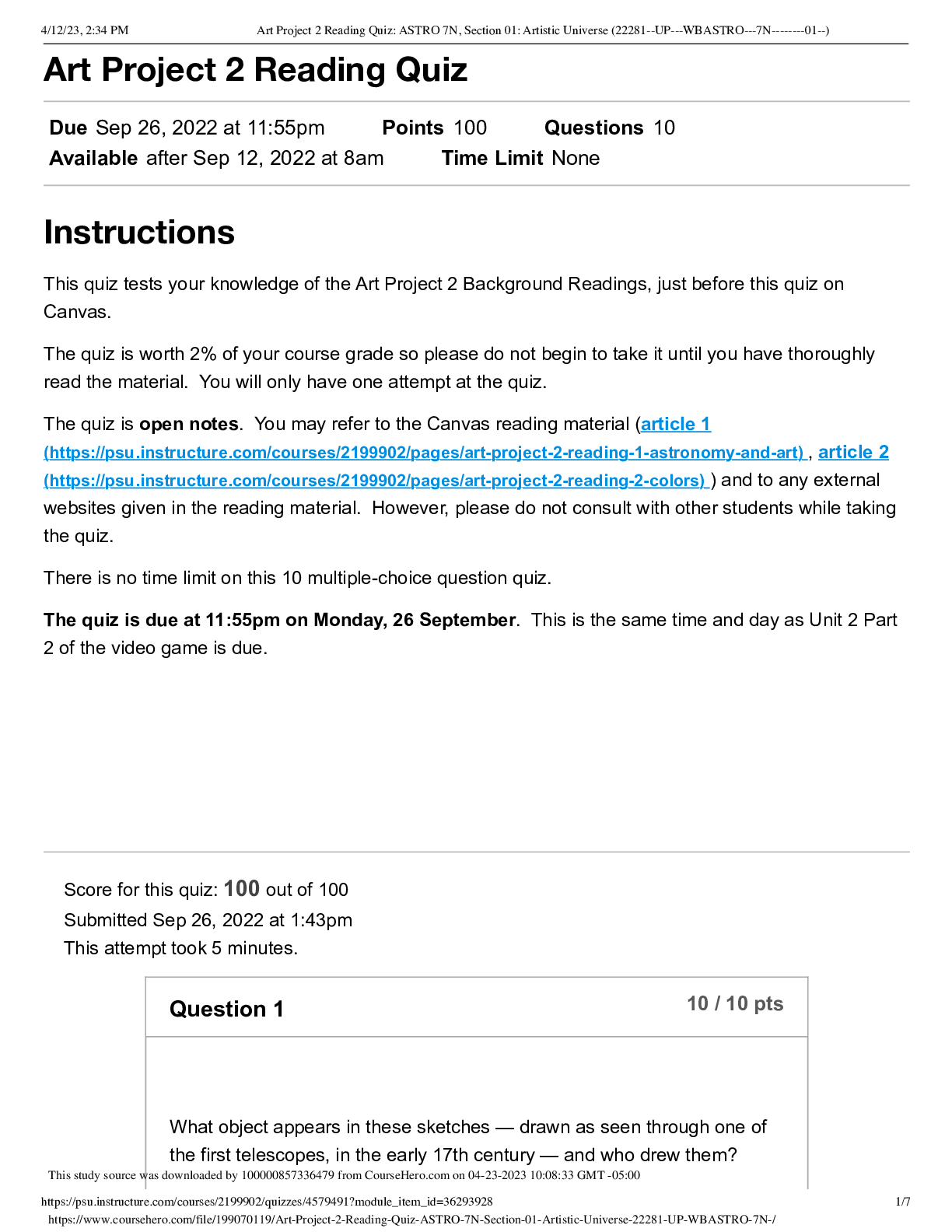
Buy this document to get the full access instantly
Instant Download Access after purchase
Buy NowInstant download
We Accept:

Reviews( 0 )
$9.50
Can't find what you want? Try our AI powered Search
Document information
Connected school, study & course
About the document
Uploaded On
Apr 23, 2023
Number of pages
7
Written in
All
Additional information
This document has been written for:
Uploaded
Apr 23, 2023
Downloads
0
Views
348

